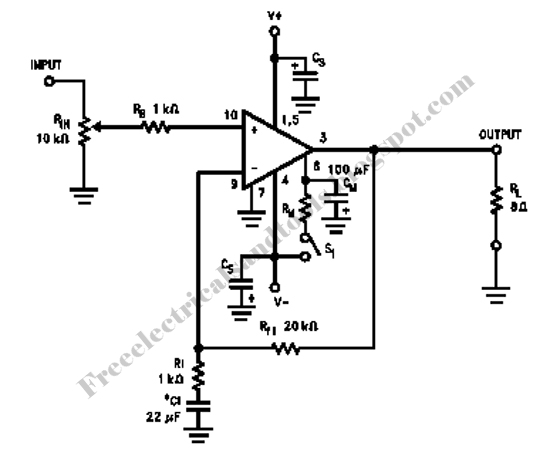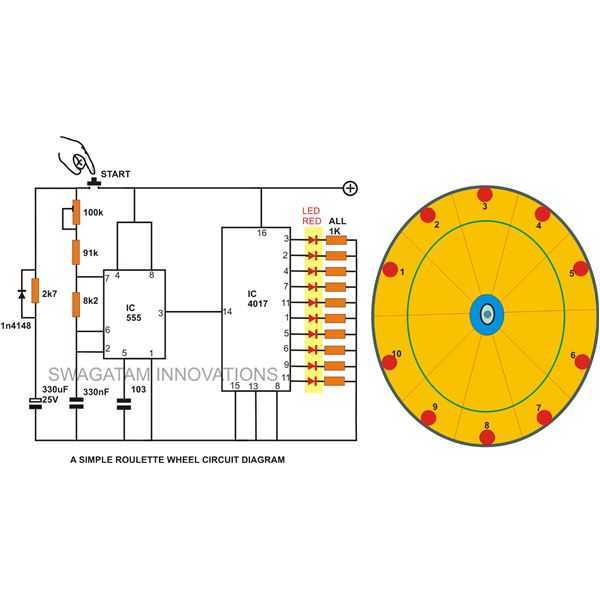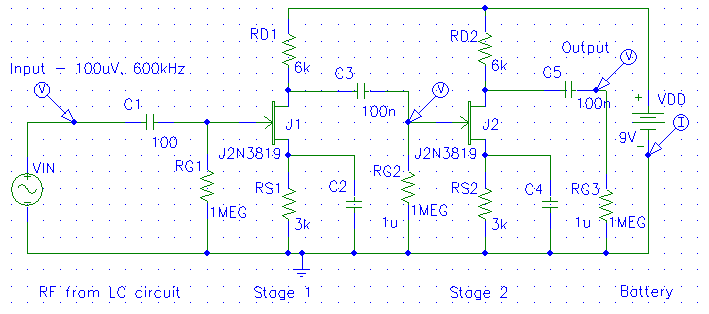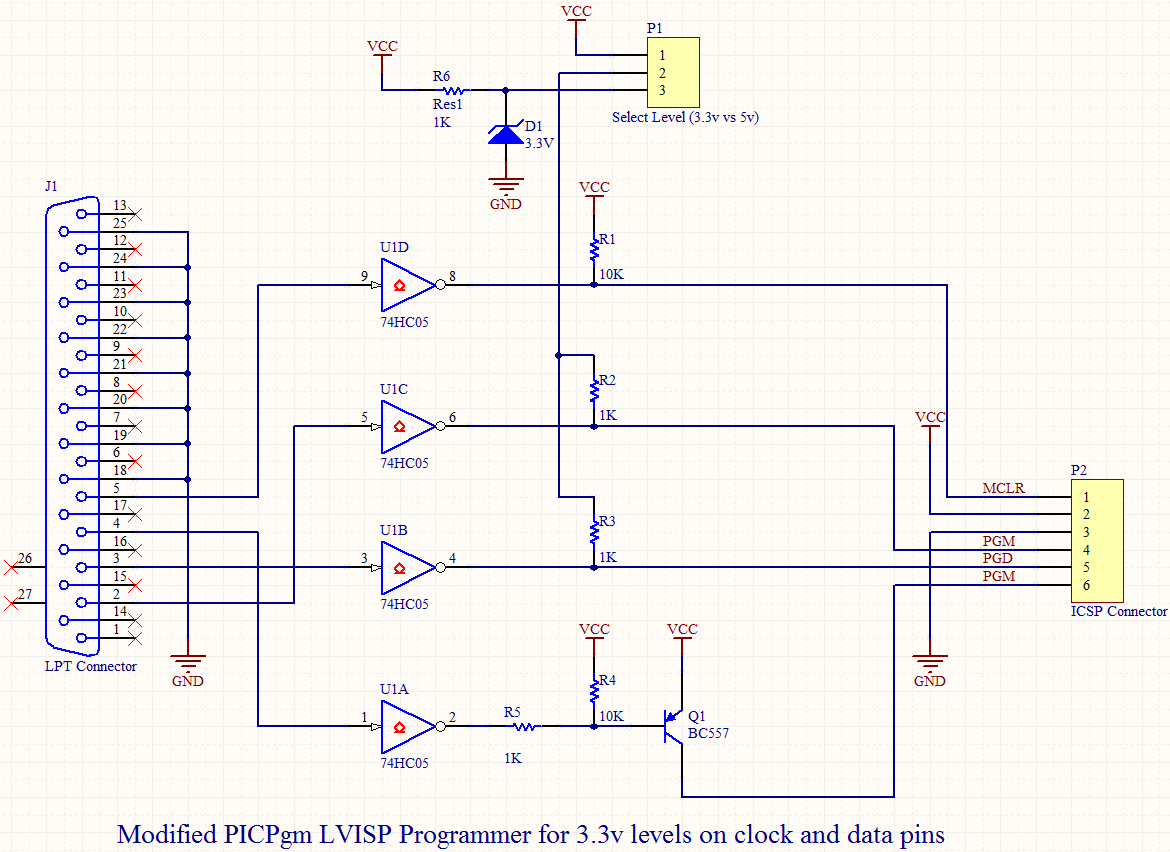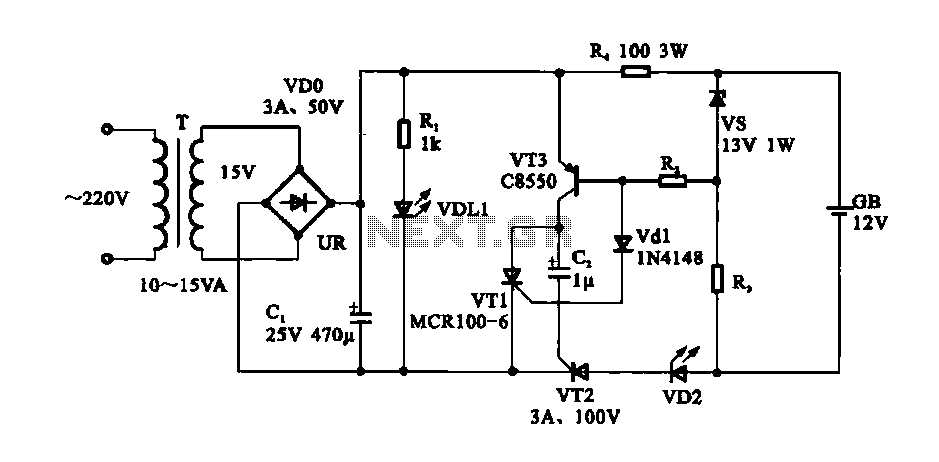
Simple ni-cad battery zapper
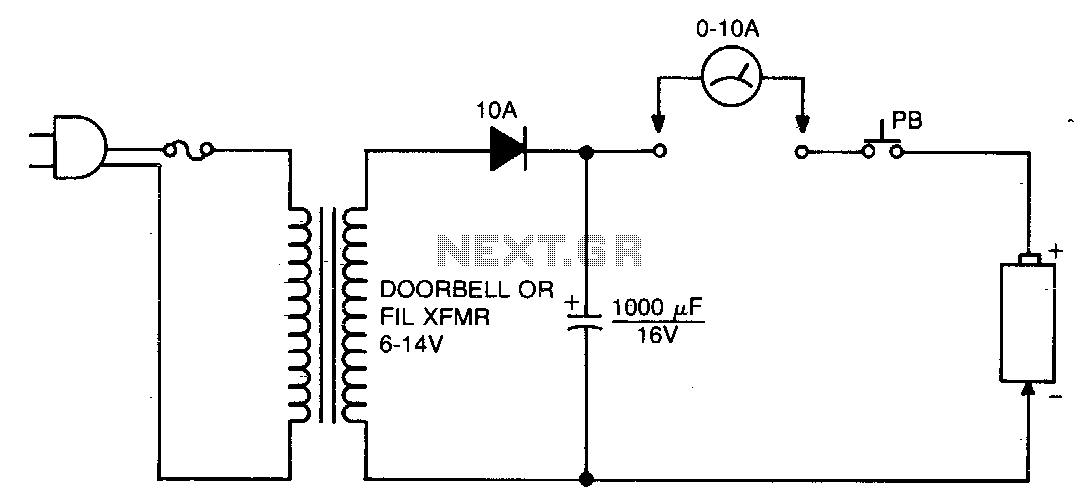
This circuit is designed to eliminate internal shorts in nickel-cadmium batteries. To operate, connect the nickel-cadmium battery to the output and press the pushbutton for three seconds.
The circuit functions by utilizing a controlled discharge process to clear internal shorts within the battery cells. It typically includes a power source, a pushbutton switch, and output terminals for connecting the battery. The pushbutton initiates the discharge cycle, allowing a brief but controlled flow of current through the battery. This action can help to break down the short circuit within the cells, potentially restoring functionality to the battery.
Key components may include a resistor to limit the current during discharge, ensuring that the process does not damage the battery. A diode might be included to prevent reverse current flow, protecting the circuit from potential damage. Additionally, a capacitor can be employed to smooth the discharge current, providing a more stable output.
The circuit should be designed with safety features, such as an indicator LED to show when the discharge process is active. Proper thermal management should also be considered, as excessive heat can damage the battery or the circuit components. It is crucial to follow manufacturer specifications for the specific battery type to avoid over-discharging, which can lead to permanent damage.
Overall, this circuit serves as a practical solution for maintaining nickel-cadmium batteries, ensuring they remain operational and extending their lifespan through effective management of internal shorts.This circuit is used to clear internal shorts in nickel cadmium batteries To operate, connect ni-cad to output and press the pushbutton for three seconds.
The circuit functions by utilizing a controlled discharge process to clear internal shorts within the battery cells. It typically includes a power source, a pushbutton switch, and output terminals for connecting the battery. The pushbutton initiates the discharge cycle, allowing a brief but controlled flow of current through the battery. This action can help to break down the short circuit within the cells, potentially restoring functionality to the battery.
Key components may include a resistor to limit the current during discharge, ensuring that the process does not damage the battery. A diode might be included to prevent reverse current flow, protecting the circuit from potential damage. Additionally, a capacitor can be employed to smooth the discharge current, providing a more stable output.
The circuit should be designed with safety features, such as an indicator LED to show when the discharge process is active. Proper thermal management should also be considered, as excessive heat can damage the battery or the circuit components. It is crucial to follow manufacturer specifications for the specific battery type to avoid over-discharging, which can lead to permanent damage.
Overall, this circuit serves as a practical solution for maintaining nickel-cadmium batteries, ensuring they remain operational and extending their lifespan through effective management of internal shorts.This circuit is used to clear internal shorts in nickel cadmium batteries To operate, connect ni-cad to output and press the pushbutton for three seconds.
